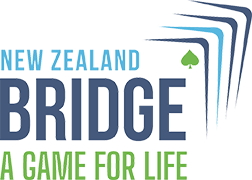
Lead out of turn
The auction
South opens 2NT followed by three passes,
East leads the AS out of turn and South Law 54D forbids the lead of a S by West according to Law50D 2a
West now leads a JC which is won by the QC in dummy who plays a small C to the KC in Wests hand. West now leads a small S and the contract goes down by one.
According to Law 50D 2a West was prohibited to lead S as long as he retains the lead.
He has lost the lead, so the above Law no longer applies, so am I correct to assuming that I now apply Law 16C 2, so unless West can demonstrate that the S lead was not based on Unauthorised Information.
Would 12C 1a be the Law to apply for a score adjustment
Thanks,
Marion
Latest Posts on this Thread
- Brad Johnston04 Nov 2020 at 10:30AM
The answer to this question is slightly subtle, but the relevant law is 50 E.
E. Information from a Penalty Card
1. Information derived from a penalty card and the requirements for playing that penalty card are authorized for all players for as long as the penalty card remains on the table.West is entitled to know that East has the AS, and that they must play the AS if legal; while it is on the table.
2. Information derived from a penalty card that has been returned to hand [as per Law 50D2(a)] is unauthorized for the partner of the player who had the penalty card (see Law 16C), but authorized for declarer.West now has to forget that East had the AS, however South is still entitled to the knowledge.
3. Once a penalty card has been played, information derived from the circumstances under which it was created is unauthorized for the partner of the player who had the card. (For a penalty card which has not yet been played, see E1 above.)
If the AS is played to a trick (say South allows any lead; and West leads a Spade), then West isn't allowed to know that East has a S holding they'd lead the A from; rather than one they'd win the A in 3rd from [many pairs would lead the A from AK, but playing third in hand win with the K instead -> winning with the A would 'deny' the K].
4. If following the application of E1 the Director judges at the end of play that without the assistance gained through the exposed card the outcome of the board could well have been different, and in consequence the non-offending side is damaged (see Law 12B1), he shall award an adjusted score. In his adjustment he should seek to recover as nearly as possible the probable outcome of the board without the effect of the penalty card(s).One would need to take West aside and ask them 'why' they switched to a Spade. If there are valid bridge reasons (authorised information) that duplicate the unauthorised information; and no other logical alternatives then you can allow a S switch. One needs to be careful here, as sometimes they will switch to a non-S to set up tricks there because they know it's safe because partner has the AS to stop the suit running. So you need to carefully consider how logical the defence is, both in a vacuum and with the knowledge that partner has the AS.
Hope that makes sense
- MARION ARLIDGE05 Nov 2020 at 12:03AM
Thanks again Brad, your input is extremely helpfull
- Nigel Kearney05 Nov 2020 at 12:37PM
I agree with Brad's points 1-3 but not 4.
I would not use 50E4 when there is unauthorised information. I would only use it when the non-offending side is damaged but the exposed card is authorised information under 50E1. Unauthorised information is still dealt with under 16B.
When there is unauthorised information, it does not matter what West's personal reasons are. All that matters is whether there are other logical alternatives, and what is suggested by the unauthorised information. Those can only be determined by analysing at the hand not by asking West what they were thinking.
- Brad Johnston05 Nov 2020 at 03:01PM
I agree, against myself. Good catch
(This is what happens when I'm answering these questions at work and pre-coffee).
Click here to log in.
